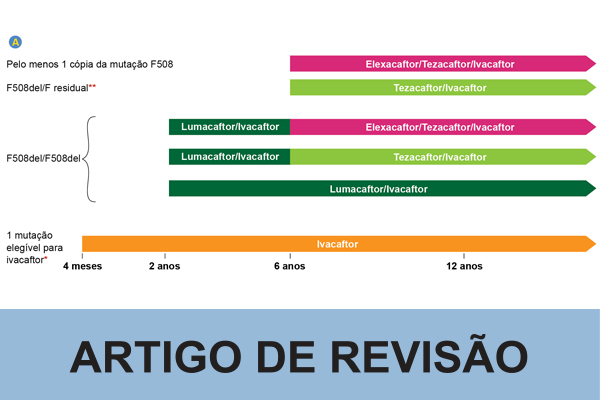SOCIAL MEDIA
Portuguese Medical Association's Scientific Journal

Cystic fibrosis is the most common lethal genetic disease in the white population, affecting approximately 80 000 people worldwide. It is an autosomal recessive, monogenic, and multisystemic disease, with over 2000 mutations described in the CFTR protein gene. The dysfunction of this protein leads to a decrease in the secretion of chlorine and bicarbonate, sodium hyperabsorption, and consequent water absorption, resulting in the thickening of secretions and accumulation of pathogens. These changes culminate in inflammation, chronic pulmonary infection, and recurrent exacerbations, with lung disease being the main cause of morbidity and mortality. In the early stages of the disease, Staphylococcus aureus is generally the agent responsible for chronic infection. Over time, Pseudomonas aeruginosa becomes more prevalent, being the most frequent bacteria in adults. However, in up to 70% of patients, colonization is polymicrobial, with frequent isolation of S. aureus and P. aeruginosa, associated with Haemophilus influenzae or Streptococcus pneumoniae, as well as isolation of other bacterial agents, viruses, or fungi. In recent years, drugs modulating CFTR have been developed which have shown a positive effect on lung function, body mass index, exacerbation rate, chlorine concentration, and quality of life. Currently, four drugs are approved that act by improving the function or increasing the amount of protein produced and consequently the ion transport. Despite the evidence so far suggesting an inability of modulators to eradicate pathogens, mainly in individuals with established lung disease, most studies have shown a decrease in bacterial load (reduced positivity of microbiological tests), indicating an action of modulators on infection and inflammation. This may justify the positive results observed in clinical trials. In this review, we analyze the scientific evidence on the impact of modulator therapy on chronic infection. Most of the published data so far is related to ivacaftor, with very limited data from double and triple associations.